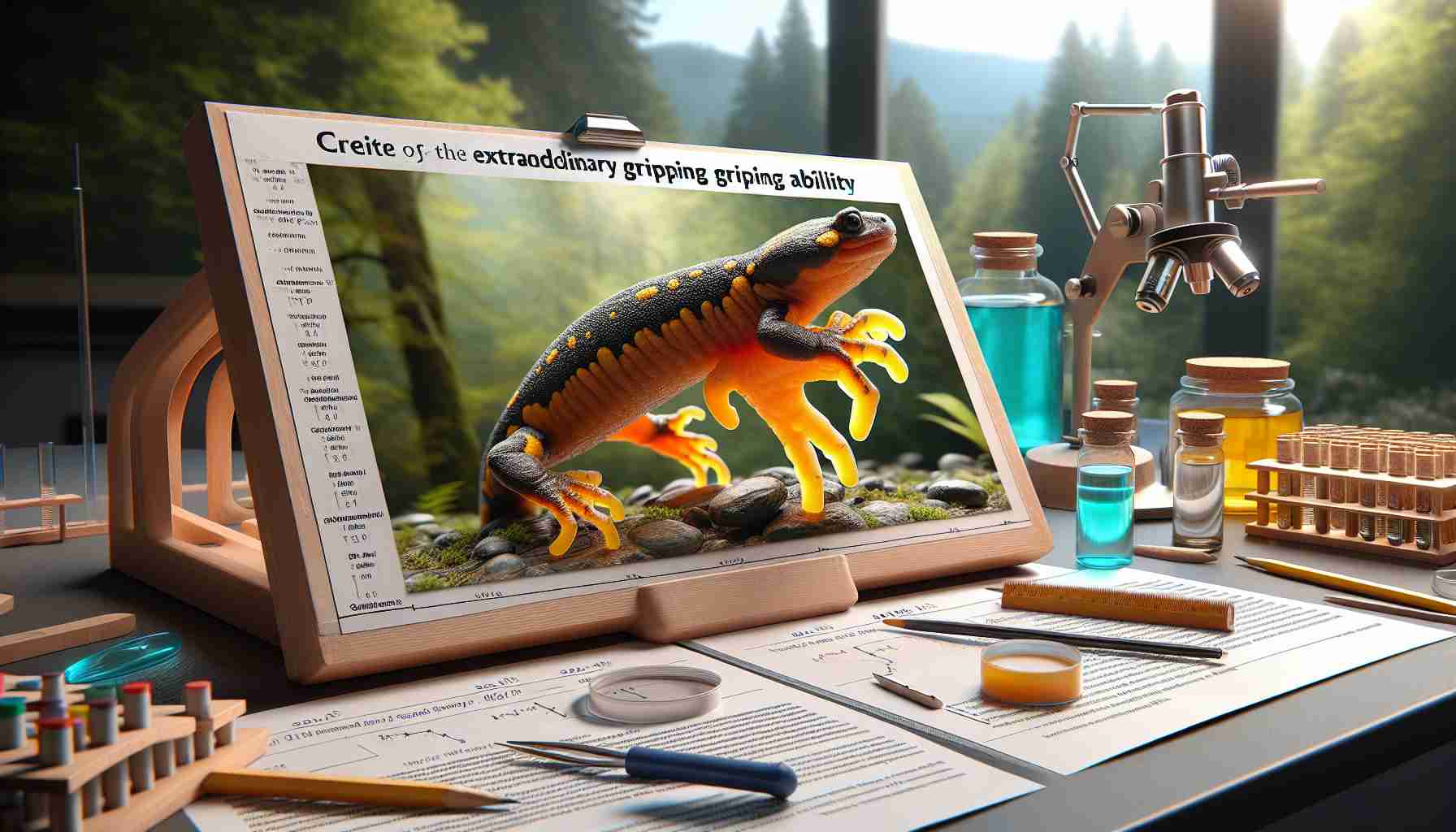- Wandering salamanders utilize a unique blood-powered mechanism in their toes for gripping and detaching from surfaces.
- This capability allows them to minimize energy use and prevent damage while navigating their forest habitats.
- Researchers discovered this adaptation during a documentary shoot, revealing the remarkable control over blood flow in the salamanders’ toes.
- The findings may inspire advancements in adhesive technologies and robotics, potentially leading to innovative applications.
- This research underscores the potential of nature-inspired solutions in enhancing tech developments.
In the lush canopies of coastal redwood forests, wandering salamanders perform astonishing acrobatics—gliding, leaping, and effortlessly clinging to surfaces. Recent research reveals the secret to their astounding grip: blood-powered toes!
A groundbreaking study led by Washington State University scientists has discovered that these remarkable amphibians can control blood flow within their toes, enhancing their attachment and detachment capabilities. As they prepare to leap, blood floods their toe tips, enabling them to adjust pressure for optimal clinging to uneven bark. This unique mechanism allows them to detach easily, minimizing energy expenditure and preventing damage to their toe tips.
This scientific revelation originated from an unexpected moment during a documentary shoot. The lead researcher observed, through high-powered cameras, how the salamanders’ toes filled with blood just before movement. Intrigued, he teamed up with a fellow camera assistant to investigate further, leading to the reveal of this remarkable physiological adaptation.
The implications of this discovery extend beyond the animal kingdom. Inspired by the salamanders’ toe mechanics, innovations in adhesives and robotic technology could emerge. Just as gecko-inspired adhesives allow surfaces to be reused, understanding how salamanders manage grip can lead to advancements in sticky technologies for various applications.
This research not only enhances our understanding of wandering salamanders but may also transform fields like biomechanics and robotics. The microscopic wonders of these slippery creatures emphasize the intricate connections between nature and technology, opening the door to future breakthroughs. Who knew blood could power the ultimate grip?
Unlocking Nature’s Secrets: How Blood-Powered Toes Could Revolutionize Technology!
The Marvelous Mechanism of Wandering Salamanders
Wandering salamanders, found in coastal redwood forests, possess extraordinary capabilities for gripping and leaping, thanks to a recent discovery that reveals their secret: blood-powered toes. Scientists have unraveled how these amphibians control blood flow within their toes, which significantly enhances their grip on challenging surfaces. This remarkable adaptation plays a critical role in their movement, allowing them to attach and detach with impressive efficiency.
Mechanism Behind the Grip
Through innovative research conducted by Washington State University, it was found that as wandering salamanders prepare to leap, blood fills their toe tips. This process creates increased pressure, enabling them to cling efficiently to the uneven surfaces of tree bark while also allowing for quick and energy-efficient detachment. Such insights highlight how these creatures manage to navigate their arboreal habitats with grace and power.
Potential Applications Inspired by Salamander Mechanics
The implications of this study stretch into various fields, especially in technology and innovation. Researchers believe that understanding the grip mechanics of wandering salamanders could inspire new types of adhesives, robotics, and material science advancements. For instance, adhesive technologies that mimic the salamanders’ ability could lead to reusable surfaces and efficient climbing devices, paralleling the developments seen with gecko-inspired adhesives.
Key Questions Answered
1. How do wandering salamanders control blood flow in their toes?
The salamanders can regulate blood flow to their toe tips, allowing precise pressure adjustments that enhance grip and facilitate smooth detachment.
2. What are the potential technological innovations stemming from this discovery?
Possible innovations include advanced adhesives and climbing robots that mimic the salamanders’ gripping mechanism, leading to more efficient and adaptable tools and surfaces.
3. How does this research influence our understanding of biomechanics?
This study provides valuable insights into the evolutionary adaptations of amphibians and their implications for biomechanics, offering a clearer picture of how animals interact with their environment and what we can learn from these adaptations.
Innovations and Trends
As researchers delve deep into the mechanics of wandering salamanders, the interest in bioinspired technology is expected to grow. Innovations could focus on sustainability, utilizing natural models to enhance engineering practices. This blend of biology and technology paves the way for advancements in various sectors, including medical devices, construction, and environmental engineering.
Suggested Related Links
For more in-depth information on technology inspired by nature, check out the following:
Nature
ScienceDirect
Science Magazine












